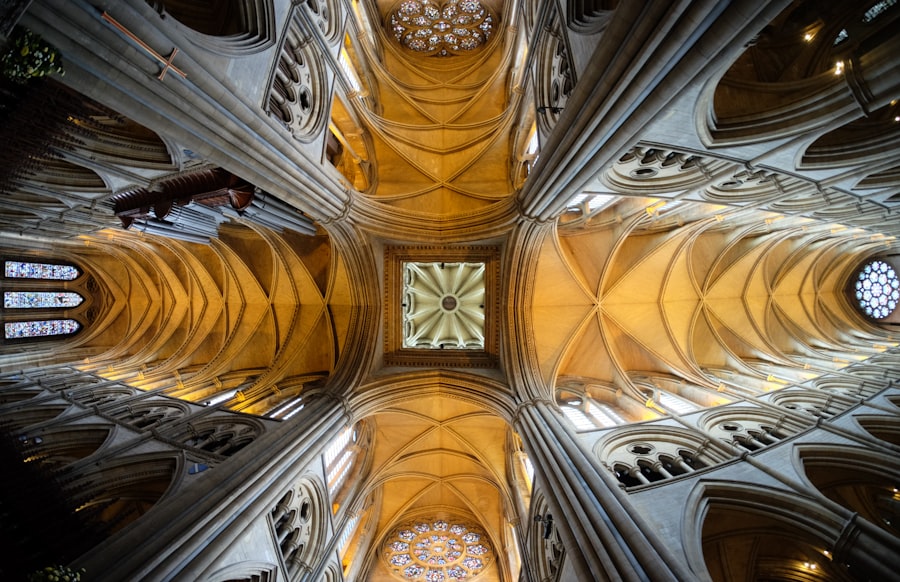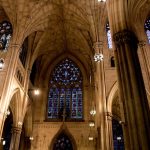Download links
How to install 8k8 Manila Cathedral: A Historic Landmark APK?
1. Tap the downloaded 8k8 Manila Cathedral: A Historic Landmark APK file.
2. Touch install.
3. Follow the steps on the screen.
Description
The Manila Cathedral, officially known as the Cathedral-Basilica of the Immaculate Conception, has a rich and storied history that reflects the broader narrative of the Philippines itself. Its origins can be traced back to the Spanish colonial period, specifically to 1581 when the first church was constructed on the site. This initial structure was made of bamboo and nipa palm, a humble beginning that belied the significance the cathedral would later hold.
Over the years, the church underwent several reconstructions due to natural disasters, including earthquakes and fires, which plagued Manila throughout its history. Each iteration of the cathedral not only aimed to restore its physical form but also to reinforce its role as a spiritual and cultural center for the burgeoning Catholic community in the archipelago. The most significant reconstruction occurred after World War II when the cathedral was almost completely destroyed during the Battle of Manila in 1945.
The post-war period saw a renewed commitment to rebuilding, leading to the current structure that was completed in 1958. Designed by architect Fernando Ocampo, this version of the cathedral incorporated elements of modern architecture while still paying homage to its historical roots. The Manila Cathedral stands today as a testament to resilience, embodying both the trials and triumphs of the Filipino people throughout centuries of colonial rule, war, and reconstruction.
Key Takeaways
- Manila Cathedral was first built in 1571 and has undergone several reconstructions due to natural disasters and war.
- The architectural features of Manila Cathedral include a combination of Neo-Romanesque, Neo-Byzantine, and Gothic styles, with intricate stained glass windows and a grand dome.
- Important events and ceremonies held at Manila Cathedral include the ordination of bishops, state funerals, and the annual Easter Vigil Mass.
- Restoration and preservation efforts of Manila Cathedral have been ongoing, with the latest major restoration completed in 2014 to repair damage from a typhoon.
- Manila Cathedral is a popular tourist destination, attracting visitors with its historical significance, stunning architecture, and religious significance.
- Manila Cathedral has played a significant role in Philippine culture and history, serving as a symbol of resilience and faith, and hosting important national events.
Architectural Features of Manila Cathedral
Exterior Features
The cathedral’s exterior is adorned with a series of impressive buttresses that not only serve a structural purpose but also enhance its aesthetic appeal. The façade features a prominent rose window, a hallmark of Gothic architecture, allowing natural light to filter into the interior while creating a stunning visual effect.
Interior Design
Inside, the cathedral boasts a spacious nave that can accommodate thousands of worshippers. The high vaulted ceilings create an atmosphere of grandeur and reverence, while the intricate stained glass windows depict various biblical scenes and saints, adding color and depth to the interior.
Main Altar and Artistic Expression
One of the most striking features is the main altar, which is adorned with exquisite carvings and religious iconography. The altar is framed by a magnificent baldachin, a canopy supported by columns that draws the eye upward, emphasizing the spiritual significance of the space. The overall design of Manila Cathedral not only serves its liturgical functions but also stands as an artistic expression of faith and devotion.
Important Events and Ceremonies held at Manila Cathedral

Manila Cathedral has been the site of numerous significant events and ceremonies that have shaped both religious and national identity in the Philippines. As the principal church of the Archdiocese of Manila, it serves as a venue for major liturgical celebrations, including ordinations, confirmations, and special masses commemorating important feast days. One notable event is the annual celebration of Easter Vigil, which attracts thousands of attendees who gather to witness the lighting of the Paschal candle and participate in the joyous proclamation of Christ’s resurrection.
In addition to religious ceremonies, Manila Cathedral has also hosted pivotal moments in Philippine history. For instance, it was here that President Ferdinand Marcos was inaugurated in 1965, marking a significant moment in the political landscape of the nation. The cathedral has also served as a venue for interfaith dialogues and peace initiatives, reflecting its role as a unifying force in a country marked by diverse beliefs and cultures.
These events underscore not only the cathedral’s religious significance but also its position as a central hub for national discourse and community engagement. The relevant word “Archdiocese of Manila” has been linked to the official website of the Archdiocese of Manila.
Restoration and Preservation Efforts of Manila Cathedral
| Year | Efforts | Outcome |
|---|---|---|
| 1958 | First restoration | Reopened to the public |
| 2012 | Major restoration | Reopened for public worship |
| 2014 | Preservation efforts | Continued maintenance and conservation |
The preservation of Manila Cathedral has been an ongoing endeavor, particularly given its historical significance and vulnerability to natural disasters. Following its destruction during World War II, extensive restoration efforts were initiated to rebuild and preserve its architectural integrity. The restoration process involved meticulous research into historical documents and photographs to ensure that the new structure remained faithful to its original design while incorporating modern safety standards.
In recent years, additional restoration projects have focused on maintaining both the exterior and interior elements of the cathedral. This includes regular maintenance of its stained glass windows, which are not only beautiful but also fragile. The Archdiocese of Manila has collaborated with various organizations to secure funding for these efforts, emphasizing the importance of preserving this cultural landmark for future generations.
These initiatives highlight a commitment not only to maintaining the physical structure but also to safeguarding its historical narrative as an integral part of Philippine heritage.
Manila Cathedral as a Tourist Destination
As one of Manila’s most iconic landmarks, Manila Cathedral attracts both local and international tourists eager to explore its architectural beauty and historical significance. Visitors are often struck by the cathedral’s grandeur upon entering its doors, with many taking time to admire its intricate details and serene atmosphere. Guided tours are available, providing insights into the cathedral’s history, architectural features, and its role within the broader context of Philippine culture.
The cathedral’s location within Intramuros, a historic district that showcases Spanish colonial architecture, further enhances its appeal as a tourist destination. Visitors can easily combine their trip to Manila Cathedral with explorations of nearby attractions such as Fort Santiago and San Agustin Church. Additionally, special events such as concerts and art exhibits held within or around the cathedral draw even more visitors, making it a vibrant part of Manila’s cultural landscape.
The combination of spiritual significance and tourist interest ensures that Manila Cathedral remains a focal point for both worshippers and those seeking to understand the rich tapestry of Philippine history.
Manila Cathedral’s Role in Philippine Culture and History

Witness to History
The cathedral has been a witness to significant historical events, from colonial rule to independence movements, making it an essential part of the collective memory of the Filipino people.
Fostering Community Ties
Moreover, Manila Cathedral plays an important role in fostering community ties among Filipinos. It serves as a gathering place for various social events, religious celebrations, and community outreach programs aimed at addressing social issues such as poverty and education. The cathedral’s commitment to social justice aligns with broader movements within Philippine society that seek to uplift marginalized communities.
A Symbol of Faith and Resilience
In this way, Manila Cathedral transcends its role as merely a place of worship; it embodies the spirit of solidarity and hope that characterizes Filipino culture. Through its architectural grandeur, historical significance, and active engagement with contemporary issues, Manila Cathedral remains an enduring symbol of faith and resilience in the Philippines. Its story is interwoven with that of the nation itself—a narrative marked by trials, triumphs, and an unwavering commitment to community and spirituality.
This article discusses the immersive gameplay and stunning graphics of the game, providing a deeper insight into the world of 8k8. Check it out here.
FAQs
What is the 8k8 Manila Cathedral?
The 8k8 Manila Cathedral is an article that discusses the historical and architectural significance of the Manila Cathedral in the Philippines.
When was the Manila Cathedral built?
The original Manila Cathedral was built in 1571, but it has been destroyed and rebuilt several times due to natural disasters and wars.
What is the architectural style of the Manila Cathedral?
The Manila Cathedral features a combination of architectural styles, including Baroque, Neo-Romanesque, and Neo-Byzantine elements.
What is the significance of the Manila Cathedral?
The Manila Cathedral is a symbol of the Philippines’ rich religious and cultural heritage, and it has played a significant role in the country’s history.
Is the Manila Cathedral open to the public?
Yes, the Manila Cathedral is open to the public for worship, tours, and special events.
Has the Manila Cathedral undergone restoration?
Yes, the Manila Cathedral has undergone several restoration projects to preserve its historical and architectural integrity.
What are some notable features of the Manila Cathedral?
Some notable features of the Manila Cathedral include its ornate interior, beautiful stained glass windows, and iconic bell towers.
Is the Manila Cathedral a popular tourist attraction?
Yes, the Manila Cathedral is a popular tourist attraction for visitors interested in history, architecture, and religious landmarks in the Philippines.





